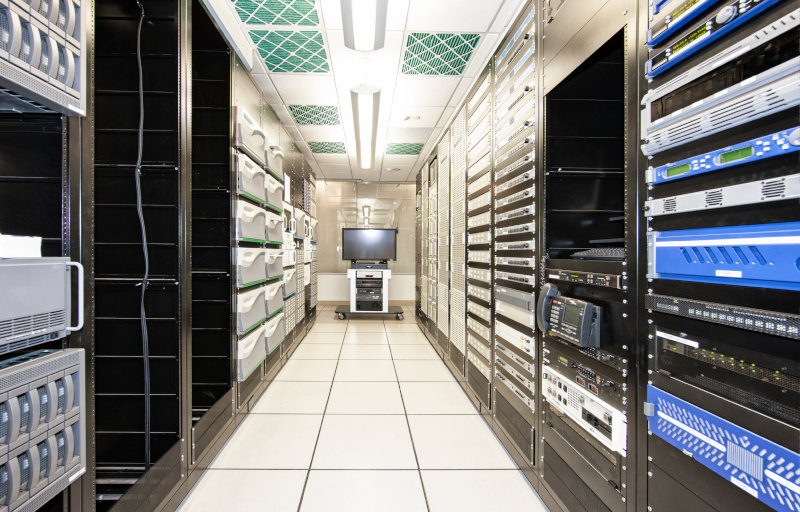Many key players in the IT industry are adopting “circular thinking” for their servers and networking equipment. For example, one IT titan has pledged to become waste free by 2030 and is establishing its first Circular Center, focusing on reusing, repurposing and recycling server packaging within its data centers.
Datacenters contribute to approximately two million tons—about 4%—of the world’s e-waste (discarded electrical and electronic devices). Datacenters also generate a substantial amount of packaging waste. A large part of this waste is due to single-use packaging materials.
Shipping fully-configured racks that weigh over 3,000 lbs. is no small feat, especially given the high costs involved. However, it is possible to do so sustainably while ensuring they arrive safely. By adopting “circular packaging” practices, data centers can significantly reduce their environmental impact, improve operational efficiency and lower costs.
What Is Circular Packaging?
Circular packaging is part of a broader concept known as the “circular economy,” an economic model aimed at minimizing waste and making the most of resources. Unlike the traditional, linear economy, which follows a “take, make, dispose” pattern, the circular economy emphasizes keeping products, materials and resources in use for as long as possible. This approach seeks to create a closed-loop system where waste is reduced, resources are re-used and environmental impact is minimized.
Circular packaging focuses on the entire packaging life cycle, from design and material selection to disposal and re-use, ensuring that every step supports sustainability. It includes:
- Recyclable materials that are processed to create new products.
- Recyclable materials that are processed to create new products.
- Compostable options that break down naturally without harming the environment.
Why Circular Packaging Matters for Data Centers
Adopting a circular packaging system can lead to substantial benefits for data centers:
- Reduced Environmental Impact: Utilizing sustainable materials helps decrease waste and resource consumption.
- Cost Efficiency: Circular materials can lower long-term costs through reuse and recycling.
- Enhanced Brand Image: A commitment to sustainable packaging resonates with clients and stakeholders who prioritize environmental responsibility.
Optimize Packaging Design
Design packaging that fits your equipment snugly to minimize excess space. Custom packaging solutions not only protect your products during transit but also reduce the amount of material needed. Working with a packaging design engineer can help you develop innovative solutions that maximize material efficiency while ensuring safety.
Embrace Reusable/Recyclable Materials
Investing in reusable packaging solutions can drastically cut down on waste. Consider using wood pallets, crates and containers that can withstand multiple shipping cycles. By reducing reliance on single-use materials, you not only lower waste but also decrease shipping costs over time.
Switching to biodegradable or recyclable materials can also make a significant difference. For example, consider using biodegradable packing peanuts, recycled cardboard or compostable stretch film. These alternatives not only help reduce your environmental footprint but can also appeal to environmentally conscious clients.
Reusable Packaging Materials for Data Centers
Reusable Plastic Containers
Invest in high-quality reusable plastic containers designed for repeated use. These containers can safely transport sensitive equipment while minimizing waste. Look for options made from:
- Polypropylene (PP): Durable and resistant to chemicals, making it ideal for long-term use.
- High-Density Polyethylene (HDPE): Known for its strength and resilience, HDPE containers can withstand multiple cycles of use and recycling.
Biodegradable Packing Materials
For cushioning and protection, consider biodegradable packing materials such as:
- Starch-based peanuts: Made from natural starch, these packing peanuts dissolve in water and are compostable.
- Mushroom-based packaging: This innovative option uses mycelium to create strong, biodegradable packaging that decomposes quickly after use.
Recyclable Stretch Film
When wrapping equipment for transport, opt for recyclable stretch film. This material can secure items while being environmentally friendly. Look for:
- Post-consumer recycled (PCR) content: Choose stretch films that contain recycled materials to promote circularity.
- Film that is easily recyclable: Ensure the stretch film can be accepted in local recycling programs.
Reusable Pallets
Switching to reusable pallets can significantly reduce the volume of disposable pallets entering the waste stream. Options include:
- Plastic pallets: Made from durable materials that can be reused for years and easily recycled at the end of their life.
- Wooden pallets: When sourced sustainably, these can be reused multiple times and recycled or repurposed when no longer viable.
Foam Inserts from Recycled Materials
Custom foam inserts can protect delicate equipment during transport. Opt for foam made from recycled materials, which can be reused in multiple packaging cycles. Look for:
- EVA foam: Ethylene-vinyl acetate is a recyclable option that provides excellent cushioning and can be cut to fit specific equipment.
Looking for ways to implement circular packaging in your business? SPG is here to help. We partner with global customers to optimize supply chains and reduce landed costs through engineered solutions. We specialize in innovative, custom packaging design and have developed sustainable packaging solutions for manufacturers across several industry sectors.
Our North American footprint means we’re able to assist you wherever you are. Feel free to reach out with any questions – we’re here to help. contact us!

